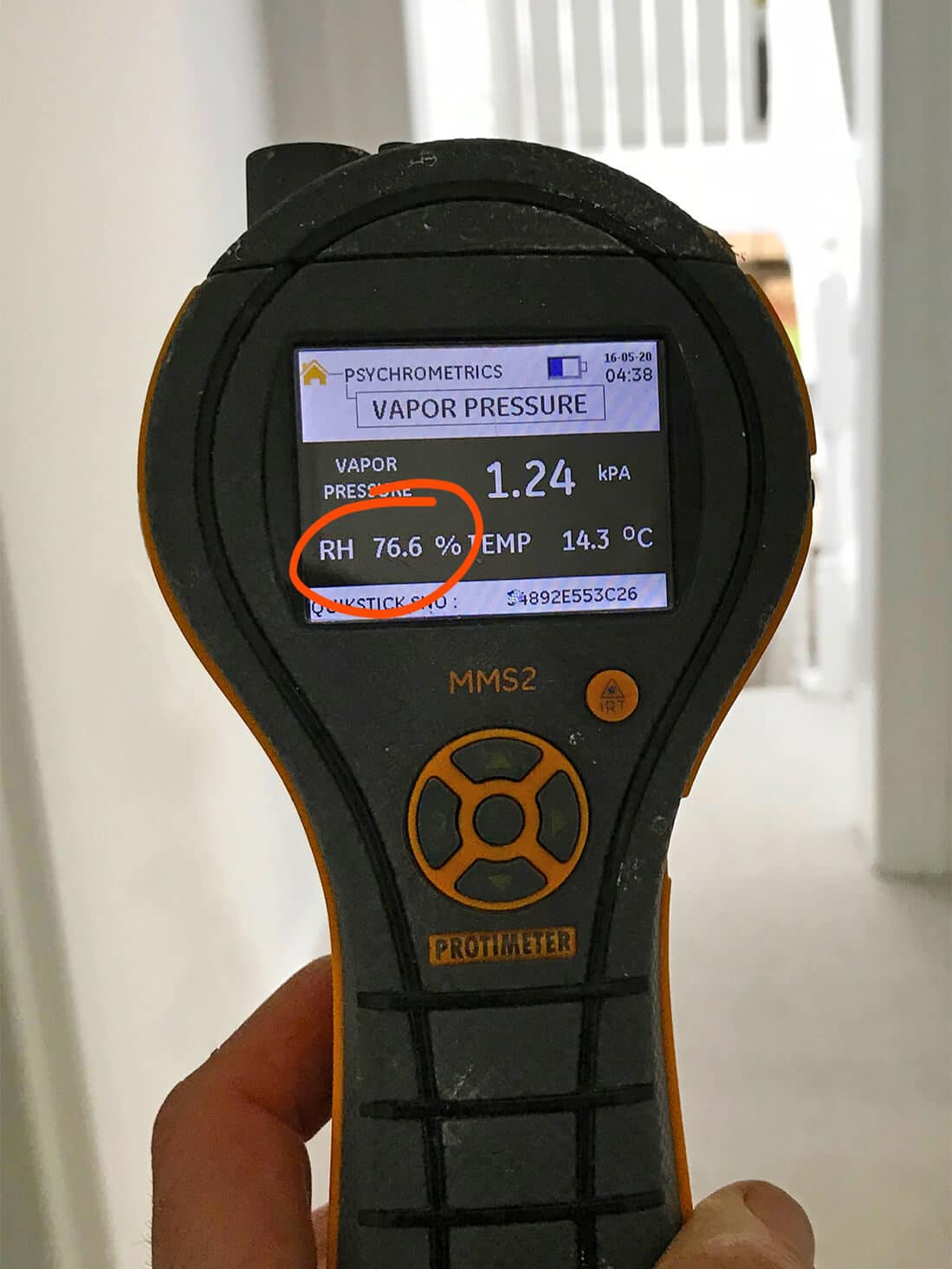When mould growth is evident inside homes or buildings, the cause must be identified and corrected and the mould contamination removed and remediated as quickly as possible in a safe and effective manner.

A mould inspection is required to identify whether there is in fact a mould issue in the home or building, and if there is, it must identify all the contributing factors causing the mould contamination, this is the most important initial step to avoid the dangers of further exposure for occupants. An inspection process must start with an interview or discussion with the occupants, particularly if they are at risk of mould related illness or respiratory illness.
Contributing moisture problems can be difficult to locate and identify, as mould can grow in wall cavities, under carpets, above ceiling tiles, in subfloor areas, within air conditioning systems, as well as other locations not readily visible. It is important that the water or moisture sources be identified and controlled before mould growth becomes a significant problem and to ensure that an effective remediation plan is implemented.
Mould contamination indoors should be assessed by an experienced and accredited mould professional who is adept and skilled at mould investigations. Too often, contributing factors are overlooked due to inexperience. PureProtect takes a comprehensive approach to performing mould investigations, a thorough understanding of the home or building forms the basis of our investigations. Our building and construction experience are vital in this process.
Mould on walls, in air conditioner units, on skirting boards, ceiling tiles, gyprock wallboards, building contents, wallpaper and other cellulosic surfaces and in the subfloor are given careful attention during a visual mould inspection. Our inspection team use non-destructive devices such as moisture meters, thermal imaging cameras, hygrometers, wall cavity inspection cameras and dust particulate counters where necessary to detect hidden moisture and to determine the areas of potential mould growth and the contributing factors. In some situations, more invasive inspections may be required.
For CIRS and mould illness sufferers, we provide a specialist inspection process which can include the collection of dust samples for DNA analysis, mycotoxin testing, testing for bacterial contamination which will enable us to specify a remediation plan.
We pride ourselves on providing our clients with accurate, meaningful reports, where useful diagnostic and prescriptive information is provided. A mould report must clearly identify the mould problem, quantify the extent of the mould problem, specify what needs to be done to rectify the mould and moisture issues and provide a detailed remediation plan.
Our reports provide the background information for the investigation along with any relevant leak history of the building, our reports will include specifications for the remediation of mould using methods complying with the IIRC S520 (2015) Standard, our reports may include waterproofing specifications to rectify water ingress, drainage specifications to address below ground water issues, or may include detail of where the construction of the building does not comply with the relevant building code or Australian Standards. All our reports are supported with photographs relevant to the inspection process and the rectification required.
For CIRS and mould illness sufferers, we provide a comprehensive inspection process which can include the collection of samples for DNA analysis, mycotoxin analysis and will enable us to specify the appropriate remediation plan. Our remediation plan for CIRS patients complies with the Indoor Environmental Professionals Panel of Surviving Mould Consensus Statement.
You can speak to one of our specialist team today by calling 1800 664 602 or simply complete our online enquiry form.
Clear objectives are established before any sampling or analysis is undertaken to ensure that useful data is generated. Mould testing can be necessary when there are questions that cannot be answered by a visual inspection only, especially when there are questions or concerns relating to health risks to building or home occupants from mould exposure including mould illness, the distribution of spores and fungal fragments through a building and where questions are posed relating to what must be remediated and where remediation may not be required. When conducting mould testing, it is always important to collected a sufficient number of samples to provide data upon which to base important decisions and form remediation plans.
We provide our clients with comprehensive reports that include identification of the underlying causes of the mould contamination, a clear remediation action plan to remedy the mould problem and recommendations to prevent a recurrence of the mould problem.
You can speak to one of our specialist team today by calling 1800 664 602 or simply complete our online enquiry form.
PureProtect Pty Ltd © 2020. All rights reserved